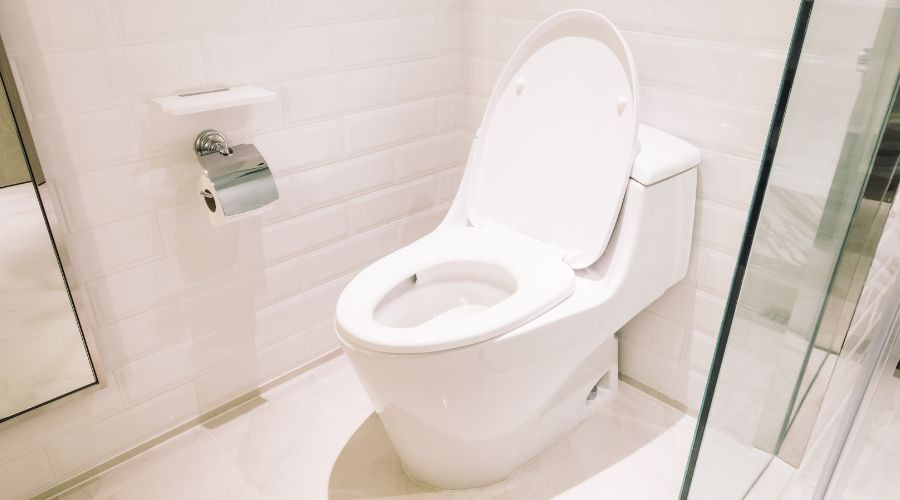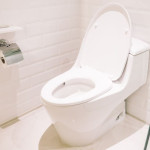Ways to Better Care for a Home’s Toilets
Nobody wants to deal with unexpected toilet problems that disrupt their day. Luckily, there are some easy ways to help avoid toilet clogs and problems. However, another important way to care for a home’s toilets is to get them repaired or replaced when needed. This post will share signs that indicate toilet repair or replacement is necessary, as well as tips for preventing toilet clogs and other common issues.
Signs a Toilet Needs to Be Repaired or Replaced
 Recognizing the signs that a toilet needs repair or replacement and quickly calling a plumber can help avoid unexpected bathroom emergencies and costly water damage. Some toilet problems that indicate the need for repair or replacement include the toilet constantly running after flushing, cracks or damage, a leaking toilet, a wobbling toilet, frequent clogging, and weak or incomplete flushes.
Recognizing the signs that a toilet needs repair or replacement and quickly calling a plumber can help avoid unexpected bathroom emergencies and costly water damage. Some toilet problems that indicate the need for repair or replacement include the toilet constantly running after flushing, cracks or damage, a leaking toilet, a wobbling toilet, frequent clogging, and weak or incomplete flushes.
Other issues that signal the need for a toilet replacement include a toilet that requires frequent and recurring repairs or a toilet that is old, such as one that has been in service for over 25 years. Older toilets use much more water than modern toilets, making a replacement beneficial for saving on water bills. Old toilets can use 3.5 to 7 gallons of water per flush, compared to modern high-efficiency toilets, which use just 1.28 gallons or less.
Tips for Preventing Toilet Clogs
 Practicing good flushing habits can help prevent toilet clogs as well as sewer line clogs, which can help save time, money, and unpleasantness. One important rule for toilet clog prevention is to be mindful of what is flushed. Only human waste and toilet paper should go down the toilet. Common household items, such as paper towels, wipes, cotton balls, dental floss, feminine hygiene products, and more, should be disposed of in the garbage instead, as they can cause serious blockages in the toilet and sewer line. These materials don't break down like toilet paper does.
Practicing good flushing habits can help prevent toilet clogs as well as sewer line clogs, which can help save time, money, and unpleasantness. One important rule for toilet clog prevention is to be mindful of what is flushed. Only human waste and toilet paper should go down the toilet. Common household items, such as paper towels, wipes, cotton balls, dental floss, feminine hygiene products, and more, should be disposed of in the garbage instead, as they can cause serious blockages in the toilet and sewer line. These materials don't break down like toilet paper does.
However, even when only toilet paper is flushed, clogs can still occur when too much is flushed at once. Flushing excessive amounts at once can overwhelm the system and lead to frustrating clogs. So, people should use less toilet paper when possible, or when more is needed, flush twice to send smaller amounts down the toilet at a time. Children especially benefit from understanding what should and shouldn't go down the toilet to avoid clogs.
How Sewer Lines Impact Toilets
Some toilet problems, such as frequent clogs or toilet backups, can actually be caused by a clogged sewer line. Because sewer line issues can manifest as toilet troubles, another way to prevent toilet problems is by preventing a sewer line clog. Obviously, one way to prevent clogs in the sewer line is with proper flushing habits, but people should also be careful about what goes down the other drains in the home.
Avoid pouring cooking grease, oil, or fats and putting food scraps down the drain, and throw them into the garbage instead. Even when the kitchen sink has a garbage disposal, items like potato peels, coffee grounds, eggshells, and foods that retain water, such as bread, pasta, or rice, can cause garbage disposal problems and sewer line clogs. Additionally, drain screens can be used to catch debris before it goes down the drain.
About Ira Hansen and Sons Plumbing
Ira Hansen and Sons Plumbing is a family-owned and operated company serving the Reno community since 1986. They provide high-quality solutions, upfront service, and personalized solutions. Call them for toilet repair and installation services in Reno, NV.





